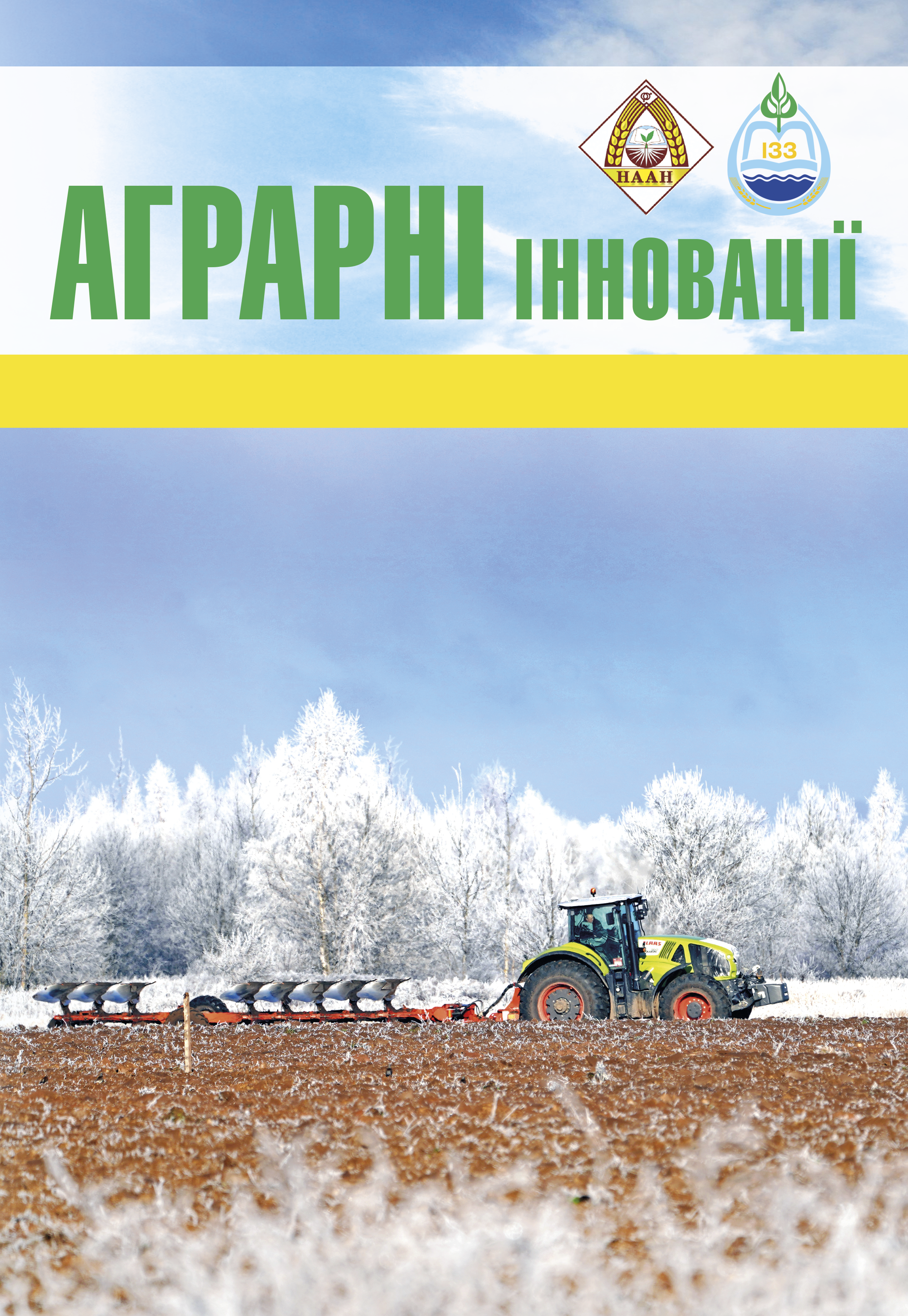The influence of the seeding rate and variety for different sowing methods on the level of biological yield of commercial seeds of technical hemp
Abstract
The purpose of the research is to establish the dependence of the biological yield of commercial technical hemp seeds on the variety and seeding rates under conventional row and wide-row sowing methods. Methods. The research was carried out during 2018–2020 at the Higher Education Institution «Podilskyi State University» in the conditions of the Western Forest Steppe of Ukraine. During the research, such scientific methods as field, laboratory, analysis, specification and generalization were used. Technological factor A is included in the experiment – seeding rates for row widths in crops of 15 cm – 1.2; 1.8; 2.4; 3.0; 3.6 million pcs./ha and 45 cm – 0.6; 0.9; 1,2; 1.5; 1.8 million pcs./ha and biological factor B – varieties of hemp YuSO-31, Gliana and Glesia. Placement of plots of technical hemp – systematized tiered. The number of repetitions is four times. Accounting for the yield of commercial seeds of technical hemp varieties was carried out by the method of threshing test sheaves. The results. It has been proven that the seeding rate, as a factor of a technological nature in the management of the integral yield indicator of commercial hemp seeds, is one of the effective factors affecting the level of biological productivity. The significance of the biological factor, i.e. the dependence of productivity on the variety, was also established. Conclusions. It was established that under the condition of the usual row method of sowing, the significantly highest integral value of the biological productivity of commercial seeds was obtained at the seeding rate of 1.8 million pieces/ha. Technical hemp indicators are for the Glesia variety in 2018 – 1605 kg/ha, in 2019 – 1476 kg/ha, in 2020 – 1644 kg/ha; for the Gliana variety in 2018 – 1472 kg/ha, in 2019 – 1305 kg/ha, in 2020 – 1466 kg/ha; for the YuSO-31 variety in 2018 – 1072 kg/ha, in 2019 – 1048 kg/ha, in 2020 – 1116 kg/ha. Under the condition of the wide-row sowing method, the highest biological level of commercial hemp seed yield was reliably obtained at the seeding rate of 0.6 million pieces/ha for the Glesia variety in 2018 – 1739 kg/ha, in 2019 – 1755 kg/ha, in 2020 – 1819 kg/ha; for the Gliana variety in 2018 – 1556 kg/ha, in 2019 – 1454 kg/ha, in 2020 – 1641 kg/ha; for the YuSO- 31 variety in 2018 – 1282 kg/ha, in 2019 – 1208 kg/ha, in 2020 – 1379 kg/ha.
References
2. Кабанець В.М. Галузі льонарства та коноплярства України: стан та перспективи. Зб. наук. праць Інституту луб’яних культур УААН. Суми: ВАТ «СОД», 2009. Вип. 5. С. 3–7.
3. Базиль С.М. Наукові досягнення співробітників ВНДІЛК у галузі коноплярства (1944-1991 рр.). Луб’яні та технічні культури. 2019. № 7(12). С. 103-116.
4. Мигаль М.Д. Біологія формування насіннєвої продуктивності конопель: монографія. Суми: видавничий будинок «Еллада», 2015. 233 с.
5. Кабанець В.М. Сучасний стан та напрямки використання промислових конопель. Гончарівські читання: збірник тез Міжнародної науково-практичної конференції, 28 травня 2013. Суми: Сумський НАУ, 2013. С. 124–126.
6. Crini G., Lichtfouse E., Chanet G., Morin-Crini N. Traditional and New Applications of Hemp. Sustainable Agriculture Reviews. Vol. 42. Springer, Cham. Рр. 37-87. URL: https://doi.org/10.1007/978-3-030-41384-2_2.
7. Callaway J.C. Hemp seed as a nutritional resource: An overview. Euphytica, 2004. 140, 65–72. URL: https://doi.org/10.1007/s10681-004-4811-6.
8. Oomah B.D., Busson M., Godfrey D.V., Drover J.C.G. Characteristics of hemp (Cannabis sativa L.) seed oil. Food Chem. 2002, 76(1). 33–43. DOI: 10.1016/S0308.8146(01)00245.
9. Kolodziejczyk P., Ozimek L., Kozlowska J. The application of flax and hemp seeds in food, animal feed and cosmetics production. In: Kozlowski RM (ed) Handbook of natural fibres, 2012, Vol 2. Elsevier, Р. 329–366. URL: https://doi.org/10.1016/B978-1-84569-698-6.50011-5.
10. Кабанець В.М. Формування параметрів посівів рослин конопель сорту Гляна залежно від технологічних заходів. Вісник Уманського національного університету садівництва. 2017. № 2. С. 36–40.
11. Кабанець В.М. Мінливість біометричних показників рослин конопель сорту Гляна за умов вирощування. Таврійський науковий вісник. 2018. № 99. С. 52–60.






